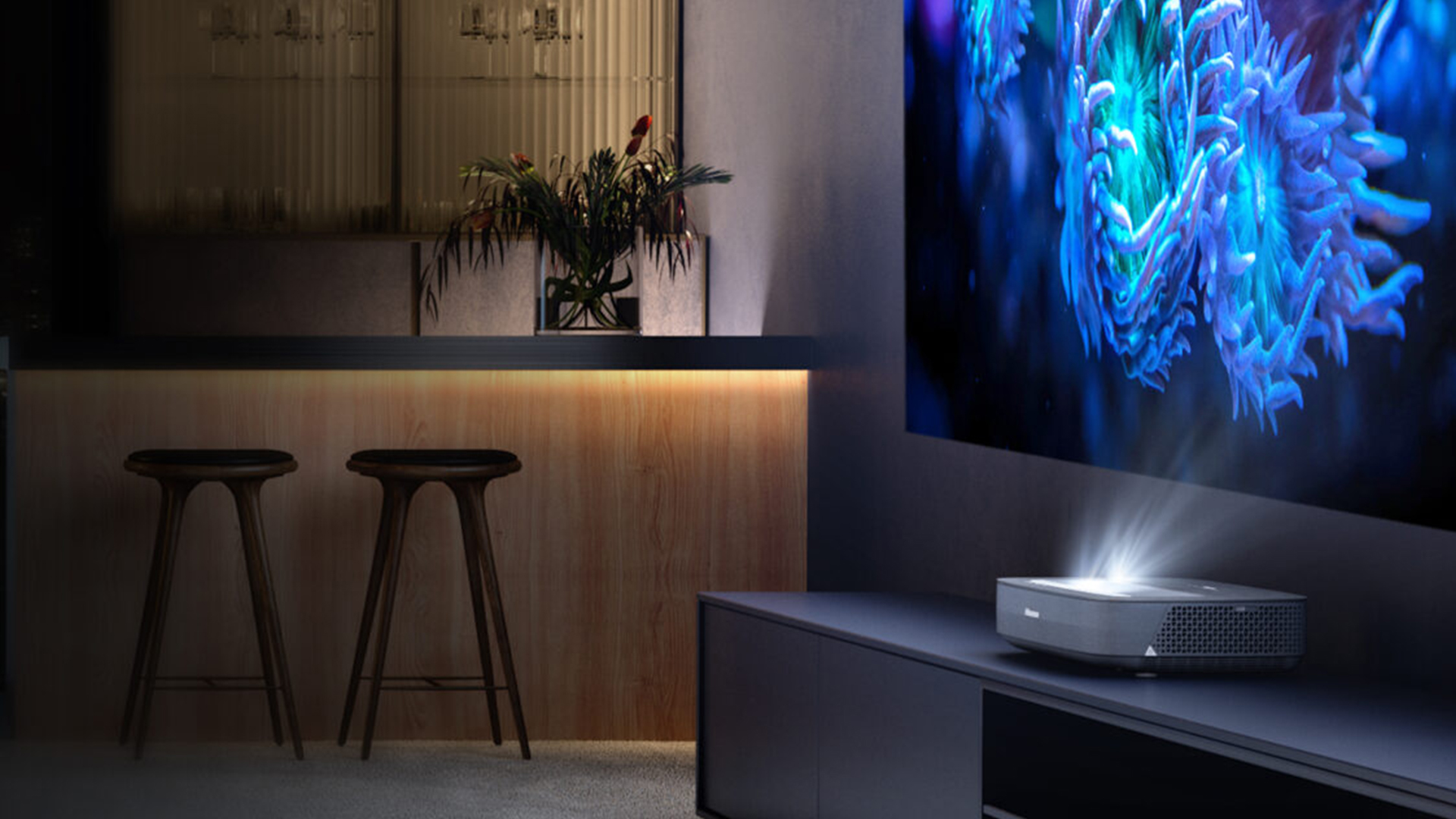
If you’ve got a massive bare wall in your home and are tempted to go big on your home cinema screen to fill it, you may be wondering whether to opt for a big TV or an ultra-short throw (UST) projector instead.
UST projectors have benefits compared with traditional projectors since they can project a large image when they’re just inches from a wall, whereas a traditional projector would need much more space from a wall to do the same – most require mounting, too, which not everyone will want to do in their living room.
But while a UST projector is quite obviously a better choice than a traditional projector for many living rooms, the choice between one and a TV is less straightforward. Both options have their pros and cons, but which should you take? Allow us to break it down to help you make your decision.
What is an ultra-short throw projector, and how is it different?
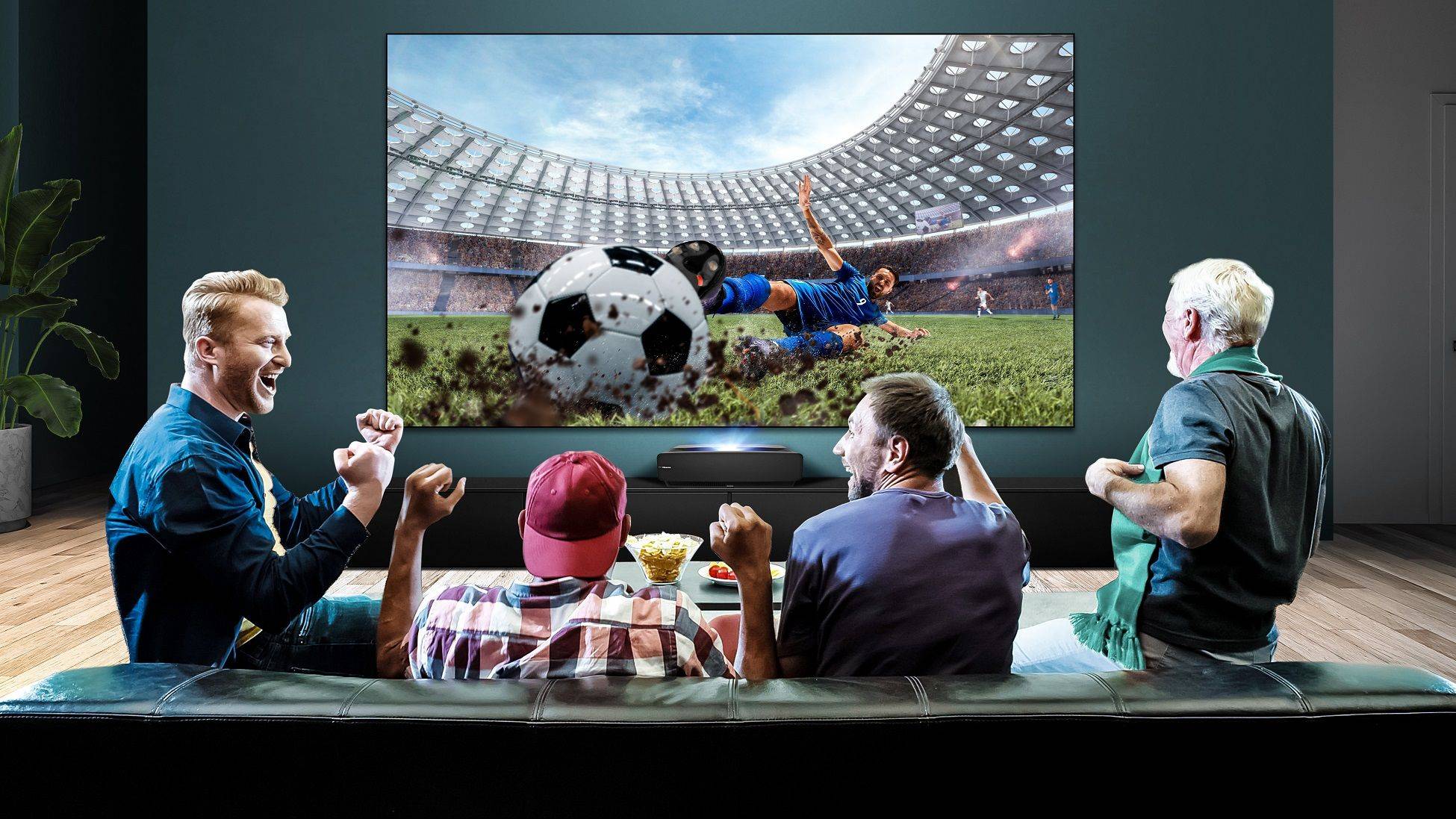
As we touched upon above, an ultra-short throw projector works quite differently to a regular projector, particularly in the way it produces its images.
In order to produce such a big picture when placed so close to a wall, a series of internal lenses bounces the image around to enlarge it, before reflecting it through an opening in the top of the projector.
The result is the ability to get 100-inch (or larger!) images when the projector is placed just a few inches from a wall or screen. The tech was originally aimed at the enterprise and education markets, but Sony kicked off the idea of bringing it to our living rooms around 10 years ago with the introduction of its LSPX-W1S ‘Life Space’ model. This cost thousands and was only available in small numbers, but as is so often the way, it laid the path for cheaper models in the coming years, both from Sony itself and competing manufacturers.
Of course, one of its biggest benefits compared with traditional projectors is how much easier it can fit into a living room environment. You don’t need masses of space to get a huge image, and there’s no need to ruin your room aesthetics by having a projector mounted to the ceiling either.
There are other benefits, though. As they’re closer to a wall, they retain much more brightness than a traditional projector does – particularly now the majority have adopted laser technology too. This makes them better in ambient light settings and means they are usually better suited to general living room viewing than most traditional projectors, which tend to favour darker rooms.
There is a big 'but' to this, though. In order to get the very best performance from a UST projector, you're going to need an ambient light reflecting (ALR), or high-gain screen to project it onto – and they don't come cheap. Some of the more affordable ones are bolted to the wall permanently, which negates one of the main UST projector benefits of being able to hide all signs of it when not in use. However, the slide up/slide down screens that do allow this are really expensive – particularly if they are motorised for the best experience.
There are other downsides too. Even though they might be easier to accommodate, they are usually quite tricky to get set up correctly. They are also generally quite large and expensive when compared with standard projectors.
However, there’s no doubt they give you a more “TV-like” experience than a traditional projector will do, both in terms of living room space required and comparable picture quality – which is why people often come back to the question, UST projector or big TV? Let’s compare them in a few key areas.
Picture size
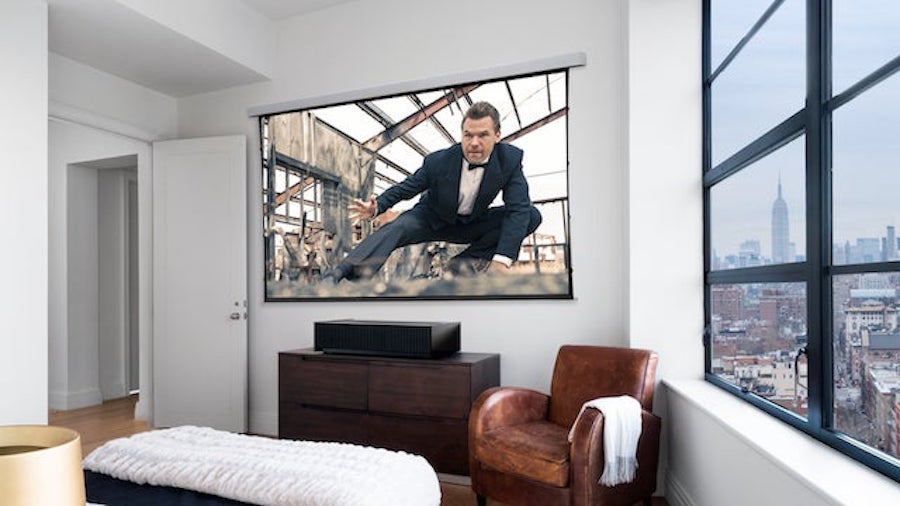
If you want a seriously big screen, then an ultra-short throw projector will give you a 100-inch picture with ease, and even up to 120 inches and beyond in some cases. Even the biggest (mainstream) TVs won’t go quite that big, but they are now standardly hitting the 85-inch mark, with some – such as the TCL 98P745 – pushing all the way up to 98 inches.
It means there's very little in it if you're looking for a massive picture at home, but projectors will still give you the very biggest, assuming you have a decent viewing distance to enjoy it from. However, it's worth remembering that if you're picking a UST projector over a traditional one due to the size of your room, even an 85-inch TV might look enormous in your space.
Ease of set-up
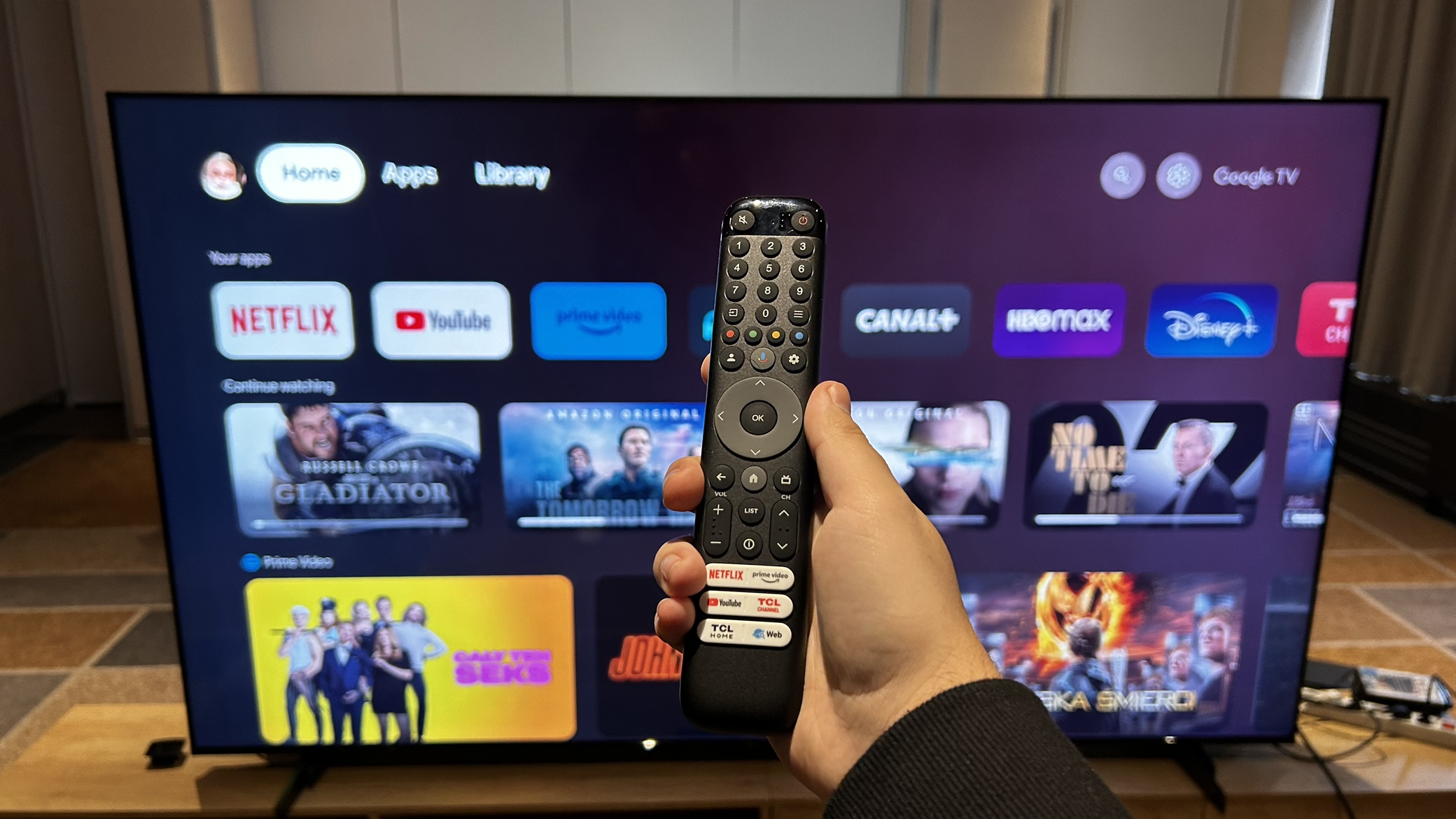
A big-screen TV takes no more set-up than a small-screen one, and we have a helpful guide on how to do just that, but a UST projector needs a bit more consideration than plonking it near a wall and hoping for the best.
Each one will come with its own recommendations from the manufacturer, so be sure to look at those, but you'll almost certainly need to position it a fair bit lower than simply putting it on the top of a sideboard or TV stand, or you won't fit the whole image on your wall. In fact, a UST projector will probably have to sit just a couple of feet from the floor, so you'll need to consider your furniture appropriately.
Then, if you're using a screen (and as we've mentioned, you really want to be for the best performance), getting the UST projector to project in the correct place is tricky due to the lack of zoom and optical image shifting features on this kind of projector. Every single centimetre can have a massive difference too, so you may want to consider professional set-up if you're short on patience.
Location
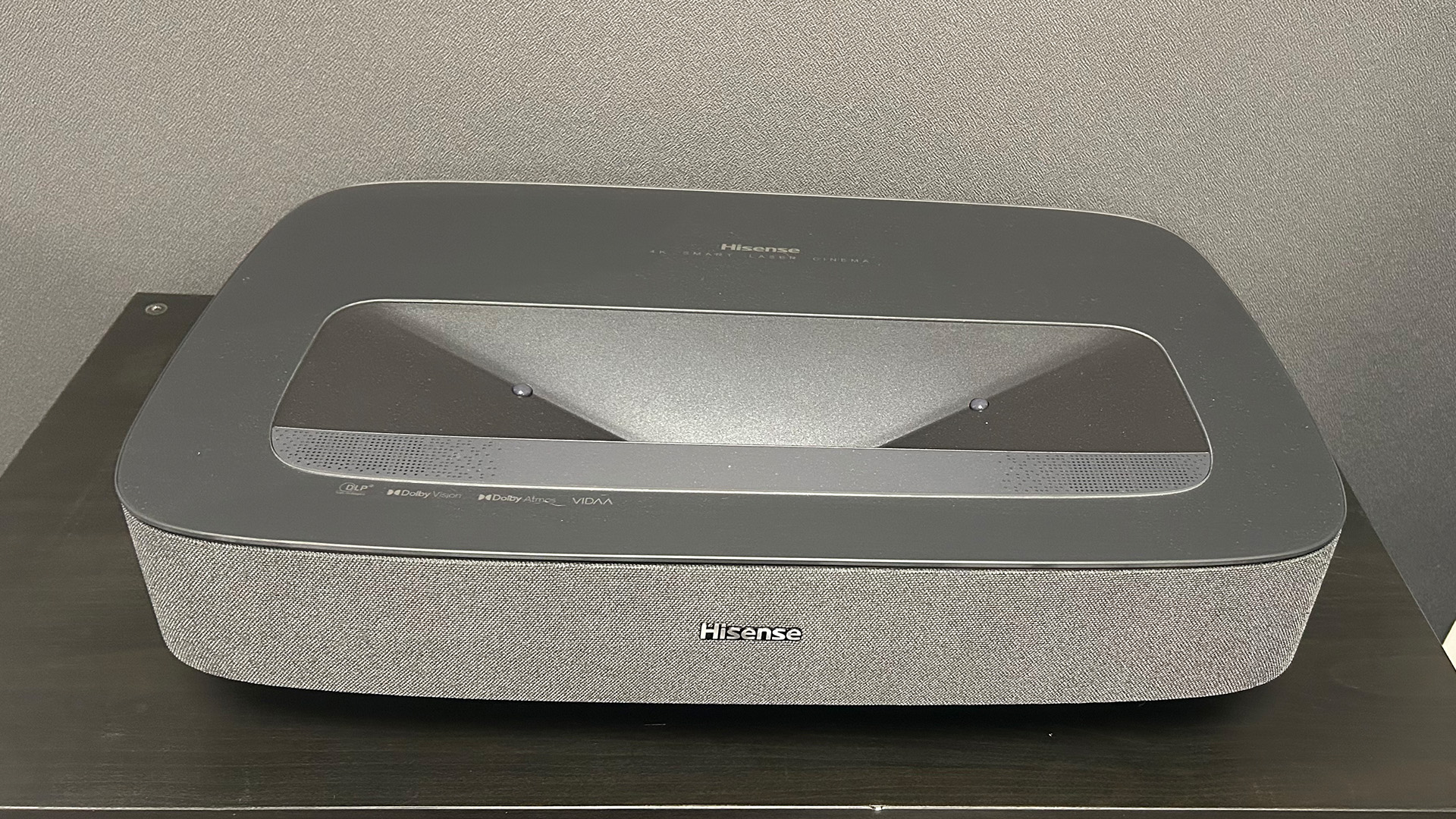
Where you intend to place your big screen might have an impact on whether you should lean into UST projectors or opt for a big-screen TV.
For a start, while UST projectors perform much better in ambient light than traditional projectors do – particularly with a dedicated UST screen – they still can't match TVs for out-and-out brightness. In a bright room, this will mean a TV is easier to watch, since it has the brightness to counteract the room conditions.
That said, a UST projector isn't susceptible to reflections in the way that TVs are – something that can be quite distracting if your screen needs to go opposite a window. Some TVs feature an anti-reflective coating to help guard against this, but a projector will always have the upper hand here.
Of course a UST projector also has the benefit that it can be pretty easily hidden away at any given time with the right screen, so if you have a dual-use room or one in which you don't want a massive screen to be the centre of attention, a UST projector gets a big tick for that.
Picture quality
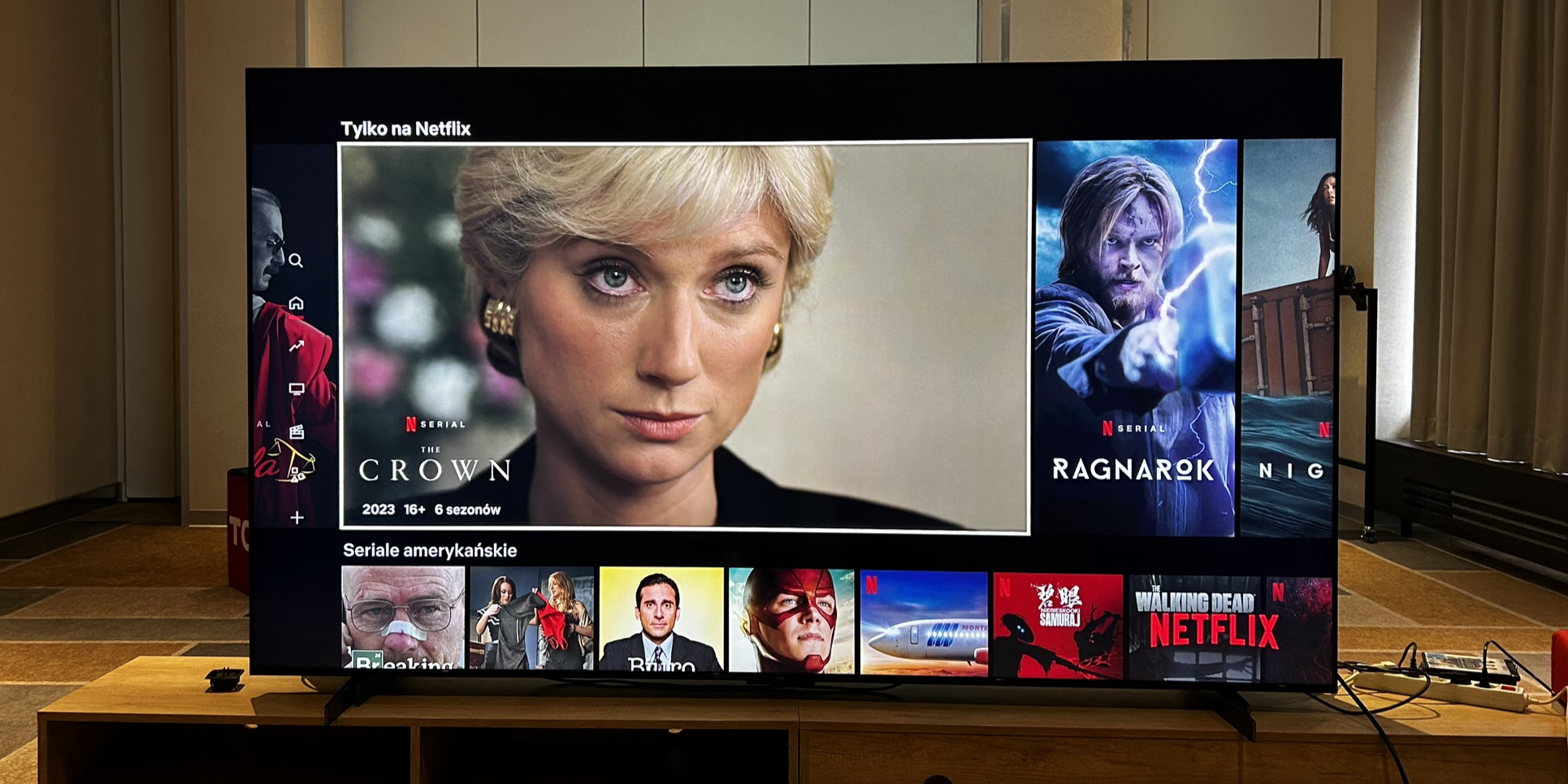
If you want the very best picture quality, there is no doubt that big TVs have to make fewer compromises to deliver a great image than UST projectors.
They'll deliver more convincing contrast and better black levels than UST projectors in dark rooms, and in brighter ones a TV's pictures will have more dynamism and vibrancy. And that's even when you're using an ALR screen for the best UST performance.
Fine detail levels also tend to be better on TVs, and gaming features are generally more advanced too – although specific performances and specifications will of course vary depending on the model.
Cost
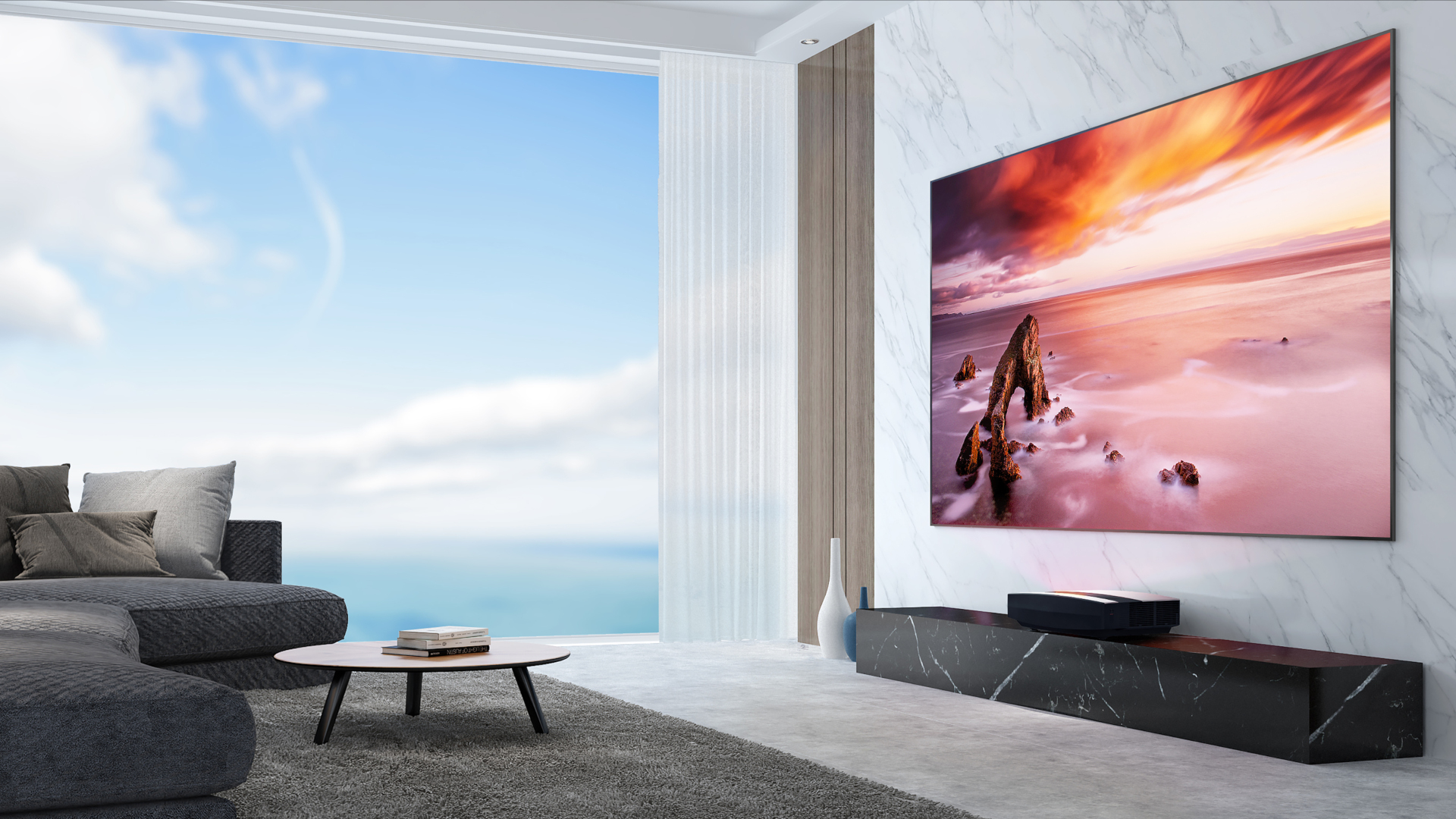
One of the main reasons people started turning to UST projectors to realise their big-screen dreams was down to cost. Not that long ago, getting a TV knocking at the door of 100 inches was nearly impossible, and even then it was ridiculously expensive, so a UST projector was a much more accessible option.
However, in recent years, things have started to change. Some of the more affordable manufacturers such as TCL have bumped their TV screen sizes up to meet this new interest in big-screen viewing – and they don't cost the earth either.
The 98-inch TCL P745 we recently checked out is available for £1799 (around $2275) at the time of writing, while our current UST projector Award winner, the Hisense PL1, costs around £1499 (about $1895). The projector is a bit cheaper, then, but once you've added the high-gain screen that is vital for a really good performance, there will be practically nothing in it.
Which should you buy?
When it comes to on-paper pros and cons, the benefits of a big-screen TV now that prices are coming down generally outweigh the benefits of a UST projector. Not only will a TV usually offer a better picture, which is surely the most important consideration in this head-to-head, they're just easier to live with for most people in the majority of situations. There's not even a cost benefit to it anymore.
However, there's something special about watching movies at home on a big projector screen, and if you have a dedicated home cinema room that isn't suitable for a traditional projector then a UST projector is well worth your consideration.
For dual-use rooms, and for those hell-bent on going for 100-inches-plus, you may also want to look into a UST projector. Just don't forget that traditional projectors can offer you a similar end result and often for less – if your room can take it.
MORE:
Ultra short throw projectors: everything you need to know
Check out our hands on with the TCL 98P745
Ultra Short Throw projectors are getting seriously good, but there are still a few major flaws







